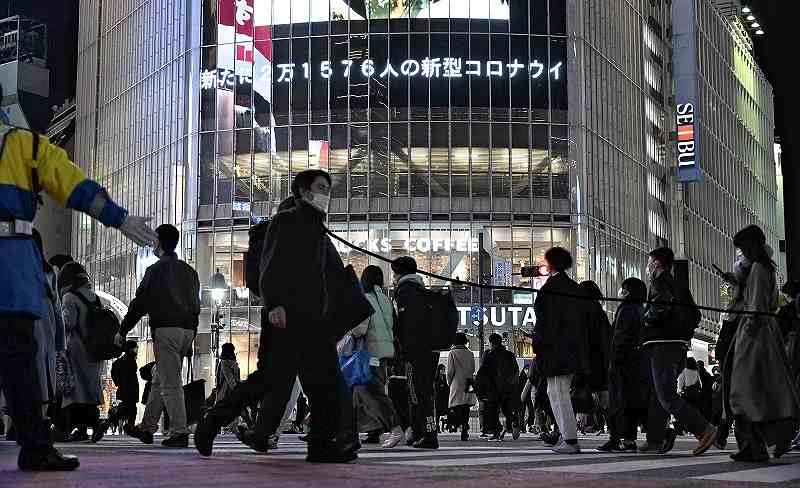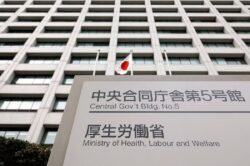
People cross an intersection in Shibuya Ward, Tokyo, on Feb. 2.
14:36 JST, March 21, 2022
New cases of coronavirus infection are expected to remain at about 6,000 a day in Tokyo after the March 21 expiration of quasi-emergency measures, according to a research team at the Nagoya Institute of Technology.
The team is also projecting that the daily number of seriously ill COVID-19 patients will fall to less than 20, as more and more people are receiving booster shots. However, if the flow of people increases, new cases in Tokyo could again exceed 10,000 per day.
Using artificial intelligence, the team predicted that new cases in the capital would drop to a weekly average of about 6,000 daily in late March, down from the current level of about 8,000. However, the figure is expected to level off in April.
If foot traffic increases to the same level as during the most recent year-end and New Year holidays, which was before the sixth wave of infections started, Tokyo could see a resurgence in early April, with daily tally reaching nearly 14,000 in the middle of the month.
In contrast, the daily number of COVID-19 patients who develop serious symptoms is expected to decrease to less than 20 by mid-April and stay at that level, regardless of people’s movements. This is believed to stem from progress in administering booster vaccinations to the elderly, who are more likely to become seriously ill.
“Even if there are fewer serious cases, the burden on medical institutions will increase if the number of new cases rises,” said Akimasa Hirata, a Nagoya Institute of Technology professor and a member of the research team. “Measures should continue to be implemented, including entry limits at restaurants, as people become more active around this time of the year on occasions such as graduation ceremonies and spring vacation.”
The university’s analysis did not take into account the possibility of the omicron variant being replaced by BA2, a more contagious subvariant of omicron.
The National Institute of Infectious Diseases has estimated that the BA2 subvariant will account for 70% of infections in early April.
If the subvariant becomes dominant, “infections could increase, as well as the number of hospitalized people,” said Takaji Wakita, director general of the institute and the chair of an advisory panel to the Health, Labor, and Welfare Ministry.
"Society" POPULAR ARTICLE
-

M4.9 Earthquake Hits Tokyo, Neighboring Prefectures
-

Israeli Tourists Refused Accommodation at Hotel in Japan’s Nagano Pref., Prompting Protest by Israeli Embassy and Probe by Prefecture
-

M7.5 Earthquake Hits Northern Japan; Tsunami Waves Observed in Hokkaido, Aomori and Iwate Prefectures
-

Tsukiji Market Urges Tourists to Avoid Visiting in Year-End
-

M5.7 Earthquake Hits Japan’s Kumamoto Pref., Measuring Upper 5 Intensity, No Tsunami Expected
JN ACCESS RANKING
-

Tokyo Economic Security Forum to Hold Inaugural Meeting Amid Tense Global Environment
-

Keidanren Chairman Yoshinobu Tsutsui Visits Kashiwazaki-Kariwa Nuclear Power Plant; Inspects New Emergency Safety System
-

Imports of Rare Earths from China Facing Delays, May Be Caused by Deterioration of Japan-China Relations
-

University of Tokyo Professor Discusses Japanese Economic Security in Interview Ahead of Forum
-

Japan Pulls out of Vietnam Nuclear Project, Complicating Hanoi’s Power Plans
























